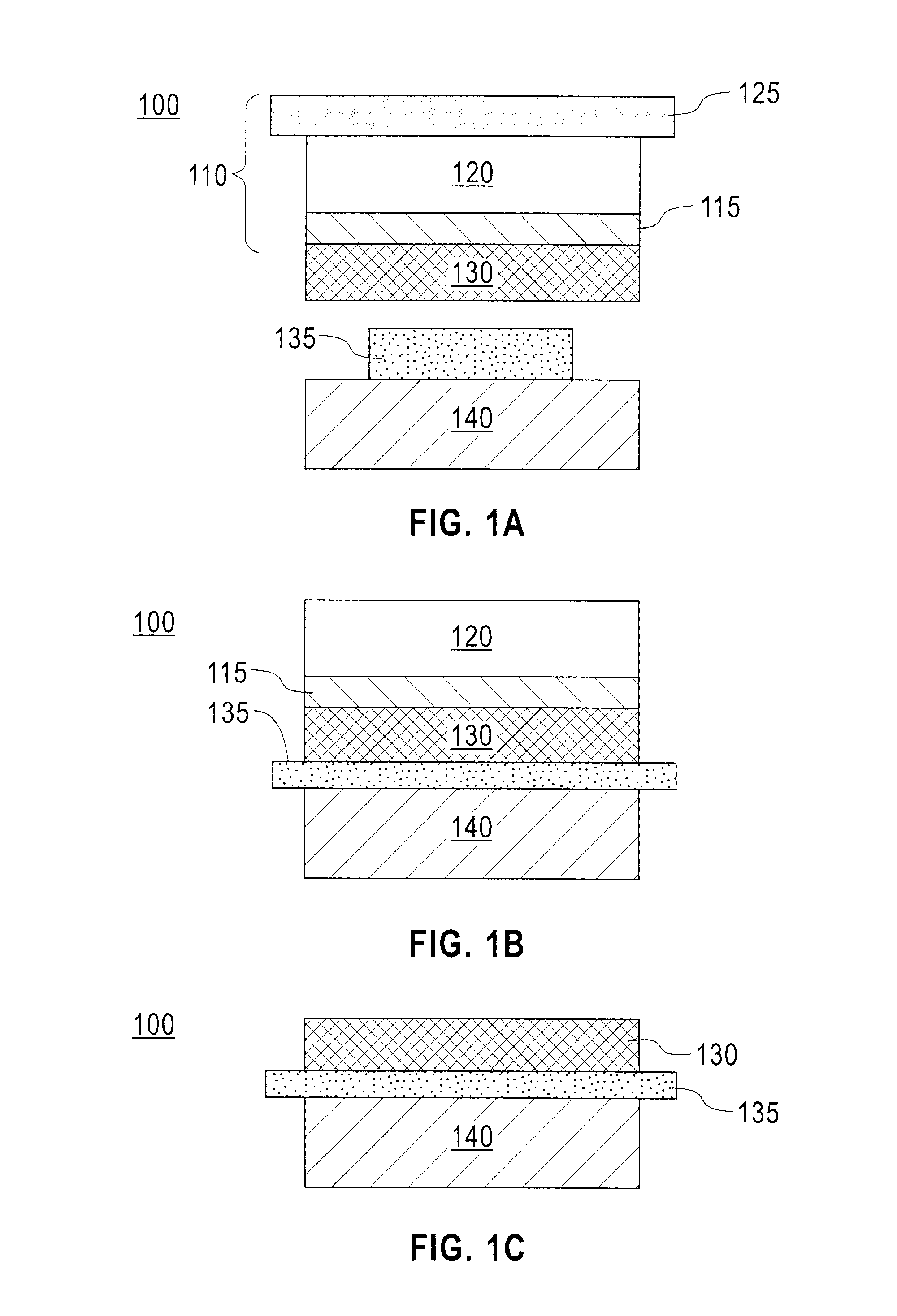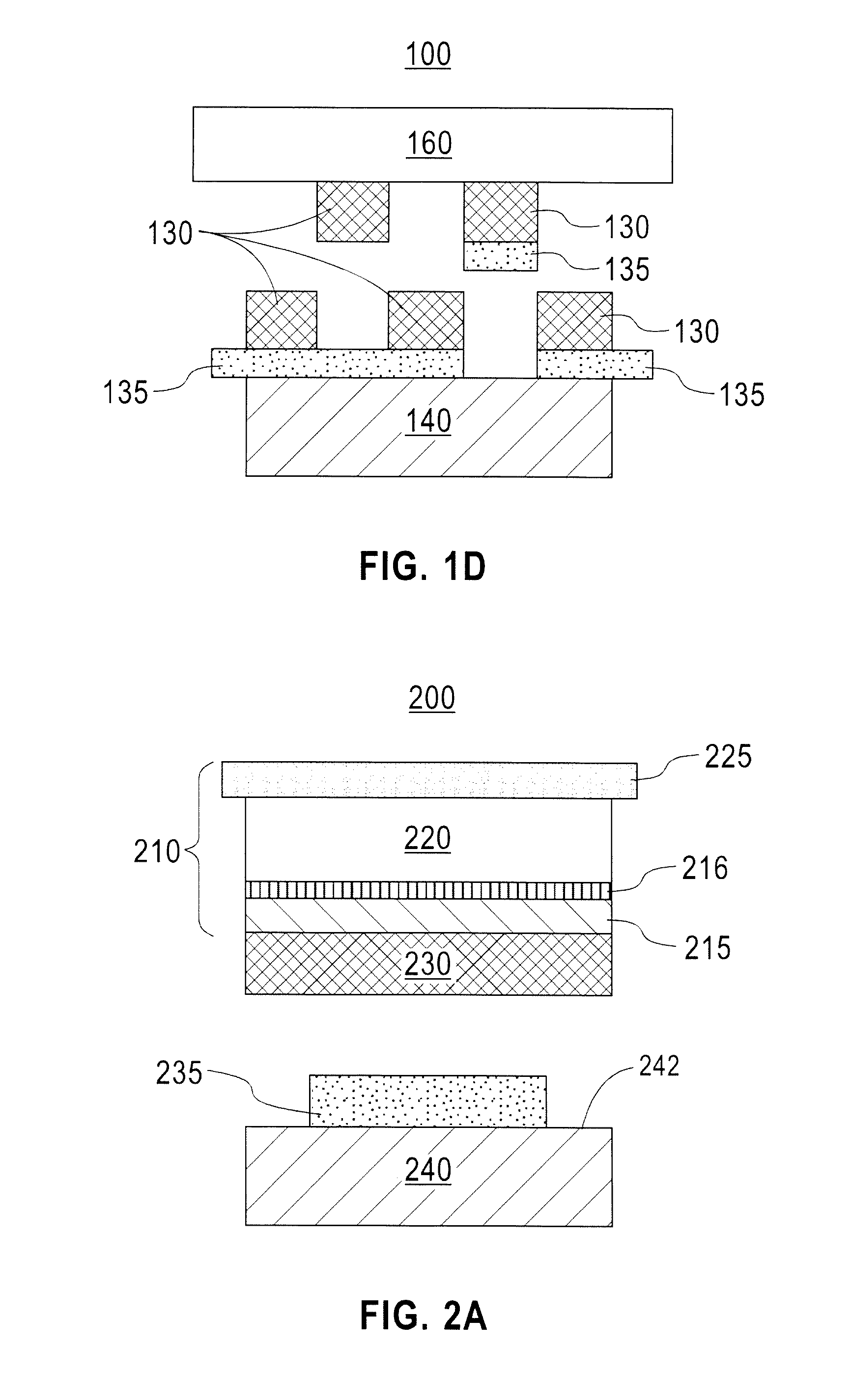Method of forming a flexible semiconductor layer and devices on a flexible carrier
- Summary
- Abstract
- Description
- Claims
- Application Information
AI Technical Summary
Benefits of technology
Problems solved by technology
Method used
Image
Examples
example
[0079]In one example of a method of using an interfacial release layer as described in FIGS. 2A through 2E, the stressor layer stack 210 was deposited on a 100-oriented silicon (Si) substrate (semiconductor layer 230) to form a silicon film. The stressor layer stack 210 included the adhesion layer 215 of titanium (Ti) (150 nanometers (nm) in thickness) and the seed layer of nickel (Ni) (400 nm in thickness), both deposited by sputtering, and the stressor layer 220 of electroplated Ni (5 micrometers (μm) in thickness) on top of the seed layer of Ni. The Ni was electroplated on a 2 inch diameter area of the Si substrate. The UV releasable tape 225 was then applied to the stressor layer 220 to induce the spelling.
[0080]After the Si film was spelled, a 300 nm aluminum (Al) layer was thermally evaporated on the spelled Si surface without removing the native oxide formed on the Si film after spelling, the Al layer forming the interfacial release layer 250. The Al side of the resulting fle...
PUM
 Login to View More
Login to View More Abstract
Description
Claims
Application Information
 Login to View More
Login to View More - R&D
- Intellectual Property
- Life Sciences
- Materials
- Tech Scout
- Unparalleled Data Quality
- Higher Quality Content
- 60% Fewer Hallucinations
Browse by: Latest US Patents, China's latest patents, Technical Efficacy Thesaurus, Application Domain, Technology Topic, Popular Technical Reports.
© 2025 PatSnap. All rights reserved.Legal|Privacy policy|Modern Slavery Act Transparency Statement|Sitemap|About US| Contact US: help@patsnap.com



